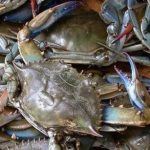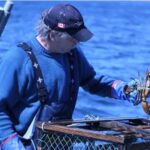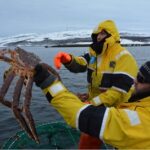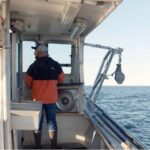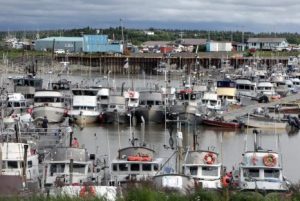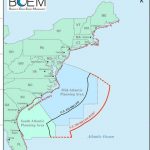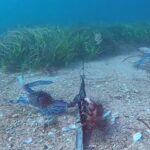Daily Archives: July 24, 2016
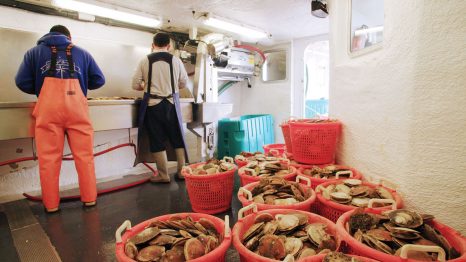
Sea Scallop Documentary To Be Screened At the 25th annual Woods Hole Film Festival August 3 at 6 PM
Over the past two decades, the unassuming sea scallop has brought on a quiet revolution in East Coast fisheries, one based on cooperation between fishermen, scientists, and government managers. In the 35-minute documentary “Sustaining Sea Scallops,” Woods Hole-based filmmakers Daniel Cojanu and Elise Hugus ask if this cooperative research approach could be the new model for beleaguered fisheries. Premiering at the 25th annual Woods Hole Film Festival on August 3 at 6 PM, with a repeat screening on August 5 at 7 PM before the feature documentary “The Memory of Fish,” “Sustaining Sea Scallops” tells a rare tale of renewal in a commercial fishery. The documentary brings audiences back to 1999, when fisheries closures and bankruptcy prompted the sea scallop industry to start funding research to improve catch efficiency, while simultaneously minimizing environmental impacts. Fifteen years later, the Atlantic sea scallop fishery is hailed as one of the most sustainable and lucrative in the world, with New Bedford ringing in as the highest-grossing port in the nation. Read the rest here 20:11
Shark liver, giant squid, and commercial fish species on seal sea-food-and-eat-it diet
A first of its kind study may make selfie-snapping tourists take a step back from the seemingly indolent New Zealand fur seals 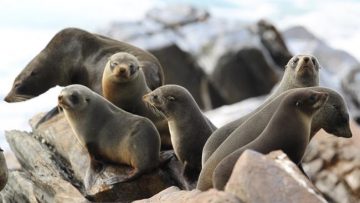 scattered around our craggy coastlines. A study of the DNA in the seals’ faeces is revealing their true identity when they hit the water, from the bottom up – through their diet. Analysis of the samples collected around New Zealand gives a much more accurate picture of what they eat than before. It includes giant squid and sharks. Big sharks. However these Hannibal Lecters of the ocean are nonchalant about taking on the feared predators: they just eat the nutrient rich livers of the sharks and some stomach. Their diet also includes commercial fish species, which make up 10 per cent of the species identified. One of the study’s authors, Lincoln University Associate Professor Adrian Paterson, says up to 46 fish, and 18 squid and octopi, species were taken at any one sample site. Read the rest here 19:32
scattered around our craggy coastlines. A study of the DNA in the seals’ faeces is revealing their true identity when they hit the water, from the bottom up – through their diet. Analysis of the samples collected around New Zealand gives a much more accurate picture of what they eat than before. It includes giant squid and sharks. Big sharks. However these Hannibal Lecters of the ocean are nonchalant about taking on the feared predators: they just eat the nutrient rich livers of the sharks and some stomach. Their diet also includes commercial fish species, which make up 10 per cent of the species identified. One of the study’s authors, Lincoln University Associate Professor Adrian Paterson, says up to 46 fish, and 18 squid and octopi, species were taken at any one sample site. Read the rest here 19:32
Kinky capelin fish clog traffic in Newfoundland
 ST. JOHN’S, N.L. — In eastern Newfoundland, nothing clogs traffic like kinky sex on the beach. On any given day for the past week or so, hundreds of people have been parking indiscriminately near a small town north of St. John’s to get to the annual “capelin roll” — a sometimes spectacular event that is as unusual as it is unpredictable. When the tide is high and conditions are just right, tens of thousands of the small, silvery fish start washing ashore on two rocky beaches to spawn, often in a wriggling, writhing mass that can seem biblical in proportions. The orgy ends when the males die. “For someone who has never seen it, it’s quite phenomenal,” said John Kennedy, mayor of Logy Bay-Middle Cove-Outer Cove. But most of the people who show up at the beaches at Middle Cove and Outer Cove aren’t there just to gawk. For centuries, locals have been coming to these beaches — and to several other, more-secluded spots around the province — to scoop up the fish and bring them home to eat. Read the rest here 11:15
ST. JOHN’S, N.L. — In eastern Newfoundland, nothing clogs traffic like kinky sex on the beach. On any given day for the past week or so, hundreds of people have been parking indiscriminately near a small town north of St. John’s to get to the annual “capelin roll” — a sometimes spectacular event that is as unusual as it is unpredictable. When the tide is high and conditions are just right, tens of thousands of the small, silvery fish start washing ashore on two rocky beaches to spawn, often in a wriggling, writhing mass that can seem biblical in proportions. The orgy ends when the males die. “For someone who has never seen it, it’s quite phenomenal,” said John Kennedy, mayor of Logy Bay-Middle Cove-Outer Cove. But most of the people who show up at the beaches at Middle Cove and Outer Cove aren’t there just to gawk. For centuries, locals have been coming to these beaches — and to several other, more-secluded spots around the province — to scoop up the fish and bring them home to eat. Read the rest here 11:15
Papahanaumokuakea: Hawaii Fishermen get no response from Obama, Schatz
 U.S. Sen. Brian Schatz, D-Hawaii, has yet to respond to a June 20th request to meet with the Western Pacific Regional Fishery Management Council on his proposal to expand the size of the Papahanaumokuakea Marine National Monument fourfold. Also unanswered are letters sent by the council to President Obama on April 8 and July 14, 2016, with concerns about the impact to Hawaii’s fisheries of the proposals by Schatz and by seven Native Hawaiians in January 2016 that the president expand the monument using his authority under the Antiquities Act. Council Chair Edwin Ebisui Jr., Executive Director Kitty M. Simonds and Vice Chairs McGrew Rice, William Sword, John Gourley and Michael Duenas reminded the Senator that the Council has federal jurisdiction over the waters within the Northwestern Hawaiian Islands beyond the current monument boundaries under the Magnuson-Stevens Fishery Conservation and Management Act of 1976. “We are dismayed that you did not consult with the prior to distribution of your letters, which have proliferated unsubstantiated statements through the media,” the council wrote to Schaltz. Read the rest here 10:13
U.S. Sen. Brian Schatz, D-Hawaii, has yet to respond to a June 20th request to meet with the Western Pacific Regional Fishery Management Council on his proposal to expand the size of the Papahanaumokuakea Marine National Monument fourfold. Also unanswered are letters sent by the council to President Obama on April 8 and July 14, 2016, with concerns about the impact to Hawaii’s fisheries of the proposals by Schatz and by seven Native Hawaiians in January 2016 that the president expand the monument using his authority under the Antiquities Act. Council Chair Edwin Ebisui Jr., Executive Director Kitty M. Simonds and Vice Chairs McGrew Rice, William Sword, John Gourley and Michael Duenas reminded the Senator that the Council has federal jurisdiction over the waters within the Northwestern Hawaiian Islands beyond the current monument boundaries under the Magnuson-Stevens Fishery Conservation and Management Act of 1976. “We are dismayed that you did not consult with the prior to distribution of your letters, which have proliferated unsubstantiated statements through the media,” the council wrote to Schaltz. Read the rest here 10:13
Maturing Oyster Recovery Projects Bring Calls for Money
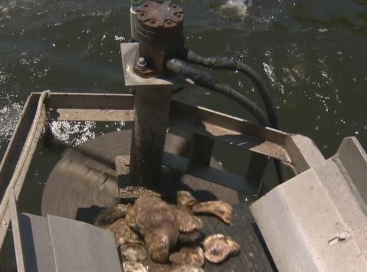 Oysters were once so abundant in New Jersey that vacationers would clamber off trains, wade into the water and pluck handfuls to roast for dinner. Their colonies piled so high that boats would sometimes run aground on them, and they were incorporated into navigation maps. Even earlier, Native American tribes would have oyster feasts on the banks of coastal inlets. But over the centuries, rampant development, pollution, overharvesting and disease drastically reduced the number of oysters, here and around the country; many researchers and volunteer groups estimate oyster populations are down 85 percent from their levels in the 1800s. That has sparked efforts throughout the coastal United States to establish new oyster colonies, or fortify struggling ones. Read the story here 09:58
Oysters were once so abundant in New Jersey that vacationers would clamber off trains, wade into the water and pluck handfuls to roast for dinner. Their colonies piled so high that boats would sometimes run aground on them, and they were incorporated into navigation maps. Even earlier, Native American tribes would have oyster feasts on the banks of coastal inlets. But over the centuries, rampant development, pollution, overharvesting and disease drastically reduced the number of oysters, here and around the country; many researchers and volunteer groups estimate oyster populations are down 85 percent from their levels in the 1800s. That has sparked efforts throughout the coastal United States to establish new oyster colonies, or fortify struggling ones. Read the story here 09:58
‘End of my life’: Plant fire a double hit for fishing family in Norman’s Cove-Long Cove
 The fiery destruction of the Dorset Fisheries plant in Norman’s Cove-Long Cove is a life-changing hit for one family in the community. Dave Cooper and his wife both relied on the fish plant for their living. He was a fisherman, and she was a plant worker for a number of years, he says. Now they are both out of work, and wondering about their future. “The end of my life…I suppose, in one sense,” Cooper said of the fire. “I’ve got a lot of gear gone, no place to sell my fish, my wife’s out of work.” A fire that broke out Thursday evening has completely destroyed the fish plant, the main employer in the small town. It has left many wondering about their future, and the future of their community. Video, Read the rest here 08:50
The fiery destruction of the Dorset Fisheries plant in Norman’s Cove-Long Cove is a life-changing hit for one family in the community. Dave Cooper and his wife both relied on the fish plant for their living. He was a fisherman, and she was a plant worker for a number of years, he says. Now they are both out of work, and wondering about their future. “The end of my life…I suppose, in one sense,” Cooper said of the fire. “I’ve got a lot of gear gone, no place to sell my fish, my wife’s out of work.” A fire that broke out Thursday evening has completely destroyed the fish plant, the main employer in the small town. It has left many wondering about their future, and the future of their community. Video, Read the rest here 08:50






































